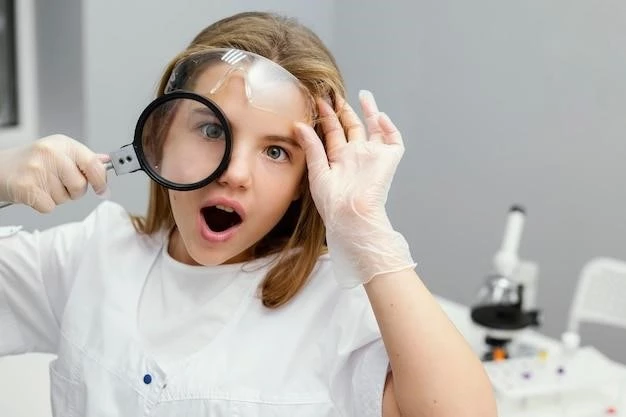Managing Keratoacanthoma Familial
Understanding, recognizing, and managing Keratoacanthoma Familial is crucial for patients and their families. This article will provide insightful guidance on the disease and its implications. By following the outlined steps, individuals can gain a better understanding of the condition and seek proper treatment and care.
Understanding Keratoacanthoma Familial

Keratoacanthoma Familial is a rare, hereditary skin condition characterized by the development of rapidly growing dome-shaped lesions on the skin. This condition typically affects multiple family members across generations, indicating a genetic predisposition. Understanding the nature of this disease is crucial for effective management.
Individuals with Keratoacanthoma Familial should be aware of the risk factors and potential symptoms associated with the condition. By recognizing the distinctive features of these lesions early on, patients can seek prompt medical attention and receive appropriate treatment. Consulting a dermatologist specializing in skin conditions can provide valuable insight and guidance on managing Keratoacanthoma Familial.
It is essential for patients and their families to educate themselves about the genetic factors that contribute to this condition. By understanding the hereditary nature of Keratoacanthoma Familial, individuals can make informed decisions about their healthcare and take proactive measures to mitigate the risk of developing skin lesions; Genetic counseling may also be beneficial in assessing the likelihood of passing on the condition to future generations.
Overall, a thorough understanding of Keratoacanthoma Familial is fundamental in navigating the complexities of this hereditary skin condition. By staying informed and proactive, individuals can effectively manage the disease, seek appropriate medical interventions, and improve their overall quality of life.
Recognizing Symptoms and Diagnosis
Recognizing the symptoms of Keratoacanthoma Familial is crucial for an early diagnosis and intervention. Patients and their families should be vigilant about any changes in their skin, especially the development of dome-shaped lesions that grow rapidly. These lesions may vary in size and color, often resembling a volcano with a central crater.
If you notice any suspicious skin growths or lesions that match these descriptions, it is important to seek a prompt evaluation from a qualified dermatologist. The dermatologist will conduct a thorough examination of the skin and may recommend a skin biopsy to confirm the diagnosis of Keratoacanthoma Familial.
A skin biopsy involves the removal of a small sample of tissue from the affected area for laboratory analysis. This procedure can help determine the presence of abnormal cells characteristic of Keratoacanthoma Familial. Additionally, the dermatologist may perform other diagnostic tests, such as imaging studies, to assess the extent of the lesions and rule out other potential conditions.
Early detection and diagnosis of Keratoacanthoma Familial are essential for initiating appropriate treatment and preventing complications. By being proactive about monitoring changes in your skin and seeking medical attention promptly, you can ensure that the disease is managed effectively. Remember, early intervention increases the likelihood of successful outcomes and reduces the risk of disease progression.
Genetic Mutation and Inherited Risk
Genetic mutations play a significant role in the development of Keratoacanthoma Familial, leading to an inherited risk of this condition within families. Understanding the genetic basis of the disease is essential for individuals affected by Keratoacanthoma Familial and their relatives.
Individuals with a family history of Keratoacanthoma Familial are more likely to inherit the genetic mutation associated with the condition. This hereditary predisposition increases the risk of developing skin lesions characteristic of Keratoacanthoma Familial. Genetic testing may be recommended to identify specific mutations and assess the likelihood of developing the disease.
It is important for individuals at risk of Keratoacanthoma Familial to be aware of the genetic factors contributing to the condition. By understanding the inheritance pattern and genetic mutations associated with the disease, individuals can take proactive measures to manage their risk and seek appropriate medical care. Genetic counseling can provide valuable information and support in navigating the complexities of hereditary skin conditions.
Managing the genetic aspect of Keratoacanthoma Familial involves proactive screening, regular monitoring, and close communication with healthcare providers. By staying informed about the inherited risk factors and genetic mutations linked to the disease, individuals can make informed decisions about their healthcare and adopt strategies to reduce the likelihood of developing skin lesions.
Biopsy and Lesion Examination
Conducting a biopsy and thorough examination of skin lesions are crucial steps in diagnosing and managing Keratoacanthoma Familial. If you have noticed any suspicious growths or lesions on your skin, it is essential to consult a dermatologist for an accurate assessment.
A skin biopsy involves removing a small sample of tissue from the affected area for further analysis. This procedure is typically performed under local anesthesia and allows the dermatologist to examine the cellular characteristics of the lesion. The results of the biopsy can confirm the diagnosis of Keratoacanthoma Familial and guide the appropriate treatment plan.
During the lesion examination, the dermatologist will assess the size, shape, color, and texture of the skin growths. Lesions associated with Keratoacanthoma Familial often have a distinct appearance, with dome-shaped structures and a central crater. By closely examining these features, the dermatologist can determine the nature of the lesions and recommend the most suitable treatment approach.
It is important to follow the dermatologist’s recommendations regarding the biopsy procedure and lesion examination. By obtaining an accurate diagnosis through these methods, you can ensure that the condition is properly identified and managed. Regular monitoring of skin lesions and timely follow-up appointments are essential for tracking any changes in the lesions and adjusting the treatment plan accordingly.
Treatment Options
When it comes to treating Keratoacanthoma Familial, various options are available to effectively manage the condition and reduce the risk of complications. The choice of treatment depends on the size, location, and severity of the skin lesions, as well as individual health factors.
One common treatment option for Keratoacanthoma Familial is surgical removal of the lesions. Dermatologists may perform excisional surgery to remove the affected tissue and prevent the lesions from growing further. This approach is often recommended for larger or more aggressive lesions that pose a higher risk of progression.
Another treatment modality for Keratoacanthoma Familial is radiation therapy. This approach involves using targeted radiation to destroy cancerous cells and reduce the size of the lesions. Radiation therapy may be recommended for lesions that are difficult to surgically remove or for patients who are not suitable candidates for surgery.
Immunotherapy is a cutting-edge treatment option that harnesses the body’s immune system to target and destroy cancer cells. In some cases of Keratoacanthoma Familial, immunotherapy may be used to stimulate the immune response and prevent the growth of skin lesions. This approach offers a less invasive alternative to traditional surgical methods.
As with any medical condition, it is important to discuss treatment options with your healthcare provider and make an informed decision based on your individual needs and preferences. By working closely with a dermatologist specializing in skin cancer, you can develop a personalized treatment plan that addresses your specific case of Keratoacanthoma Familial and maximizes the chances of successful outcomes.
Skin Cancer Management
Managing Keratoacanthoma Familial involves diligent care and regular monitoring to prevent the development of skin cancer and mitigate the risk of recurrence. Since Keratoacanthoma lesions share similarities with squamous cell carcinoma, a type of skin cancer, vigilance is essential in skin cancer management.
Patients with Keratoacanthoma Familial should prioritize sun protection to reduce the risk of new lesions and protect their skin from harmful UV radiation. Wearing broad-spectrum sunscreen, seeking shade during peak sunlight hours, and wearing protective clothing can help minimize sun damage and lower the likelihood of skin cancer development.
Regular skin evaluations by a dermatologist are crucial for early detection of any new lesions or changes in existing ones. Dermatologists can perform thorough skin exams and monitor the progression of Keratoacanthoma Familial to identify any signs of malignancy. Prompt identification of suspicious changes can lead to timely intervention and improved outcomes.
In cases where skin cancer is diagnosed, various treatment options, such as surgery, radiation therapy, chemotherapy, and immunotherapy, may be recommended depending on the type and stage of the cancer. It is essential to follow the treatment plan prescribed by healthcare providers and attend regular follow-up appointments to monitor your progress and address any concerns.
As part of skin cancer management, lifestyle modifications, including smoking cessation, maintaining a healthy diet, and staying physically active, can contribute to overall well-being and reduce the risk of cancer development. Engaging in healthy habits and adhering to recommended screening guidelines can significantly impact the prevention and management of skin cancer.
